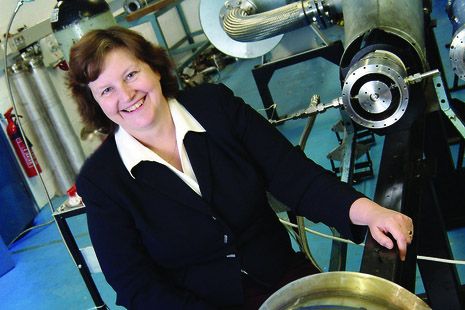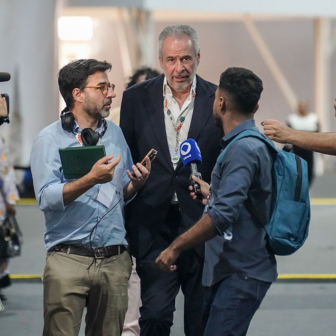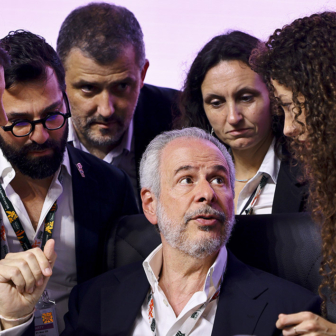Practically everything we do, from eating an ice to crossing the Atlantic, and from baking a loaf to writing a novel, involves the use of coal, directly or indirectly…
— George Orwell, The Road to Wigan Pier
I FLY a lot. It comes with the job. I’ve also, jesuitically perhaps, regarded seats on planes like any other form of public transport – if the service runs to a timetable, why not be on it?
Since big jets first flew in the 1970s plane travel has been within the reach of all of us. Given a couple of grand you can get to most places. But now there are new considerations. First are the emissions – about 3 per cent of greenhouse gases – too great? Second, now that the arrival of peak oil has been confirmed even by the International Energy Agency in Paris, we must be even more mindful of George Orwell’s warning: the energy must come from somewhere. If not coal or oil, then what?
Well, it so happens that air travel is atrociously inefficient in its organisation, and substantial savings could be achieved even without worrying about what fuel is in the tank. There are also revolutionary designs being worked on in Europe and the United States, but they will take an age to be realised. More on these later.
First, though, the alternative fuels. There are two main sources, both of them available in Australia and available quite soon. One is being developed in Townsville, where Kirsten Heimann from James Cook University has been running a pilot plant using marine microalgae since 2008. The main product is biodiesel. It is easily adapted for use in aircraft and has already been tested in many flights, some run by Richard Branson’s planes.
The really neat part of this enterprise is that two of the key inputs, carbon dioxide and nutrition for the algae, can come from sources that want to get rid of them anyway: power stations and fish farms. So you can site your algal vats near CO2 emitters and have the gases gratefully accepted by the plants. Fish poop will similarly be welcomed, though not necessarily on the scale at which it is produced – but who knows?
Overall, Heimann is sure that she’s onto a winner. “The microalgal oil they produce is very similar to what is required for very good biodiesel,” she told me. “They have eighteen-carbon chains of fatty acids and sixteen-carbon chains of fatty acids and it’s very similar to our fossil fuels already, so we don’t have to do much to process it.” Funding for the research comes from Melbourne-based company MBD Energy, and from the federal government through the Advanced Manufacturing Cooperative Research Centre. A second pilot project Heimann is involved in, at the Tarong Power Station, is receiving funds from the Queensland government.
Another exciting biofuel option was announced at the Australian Academy of Science meeting in Canberra in May this year by one of its new fellows, Thomas Maschmeyer, professor of chemistry at the University of Sydney and a whiz with catalysts. His process, well into its pilot stage, relies on a well-defined source of biomass instead of the usual pot luck of unsorted green waste.
“We are making bio-crude oil out of lignocellulosic feedstock, that is feedstock that does not compete with food,” he says. This is woody stuff from our gardens and parks, together with some waste from woodlands – but not gathered in a way that would create another controversy like the woodchipping of forests. The process uses a high-temperature, high-pressure process, aided by catalysts, to remove the oxygen from the raw material. The first phase of the project is well under way.
“Currently we have a pilot plant that runs about 100 kilograms an hour, and we are just starting to construct commercial-size demonstration units of 20,000 to 40,000 tonnes a year to show the upscaleabilty of our process,” Maschmeyer told me. “Our process is inherently modular, so we do not need the full 200,000 [or] 500,000-tonne process, and we don’t need vast amounts of investment, so we can upscale reasonably easily.” And it is four times more efficient, he says, than the methods deployed so far.
Does this mean they can supply enough product to run an airline the size of Qantas? About that he has no doubts: “Absolutely, and we are in contact with a range of airlines and aircraft manufacturers about our work.”
Both Heimann and Maschmeyer insist that the fuel they can supply is suited to substitute for conventional jet fuel right now. And the CSIRO agrees. On 25 May it released a report saying that “40 per cent of an airline’s fuel could be lower emission biofuel by 2050.” According to Paul Graham, CSIRO’s manager of carbon futures, “The Australian aviation industry could cut emissions by 17 per cent over the next twenty years with the use of such fuels.”
And the further good news from Graham is about employment and savings: “About 12,000 new jobs could be created by 2030. It could save imports of the order of $2 billion of jet fuel, so there are significant benefits for Australia.”
So much for fuels. What about those emissions?
As it turns out, the CO2 emissions from planes compare well with those of cars in terms of passengers per kilometre, according to Peter Newman of Curtin University. “Flights of up to 483 kilometres emit 0.19 kilograms of CO2 per passenger-kilometre, while those over 1126 kilometres emit 0.09 kilograms of CO2,” he told me. “So flying is in general better than car use (0.209 kilograms per passenger-kilometre), though short flights emit more than twice as much CO2 per kilometre as long flights do, and it is short flights that are most common on domestic air routes.”
But, adds Newman, the additional pollution of nitrous oxides and water vapour up in the sky makes the plane’s total pollution worse than the car overall.
But that’s based on present models. The new planes could be considerably less polluting. The Massachusetts Institute of Technology’s Green Plane for example, will use an astounding 70 per cent less fuel and cut nitrogen emissions by 75 per cent. But we shall have to wait until 2035 to see it fly.
By comparison, the sweetly named Silent Aircraft, now well under way in the other Cambridge, in England, will use about 25 per cent less fuel and emit commensurately fewer polluting gases. Ann Dowling, Professor of Mechanical Engineering at Cambridge, told me that the infrastructure of the plane is already being tested but, again, we may not see the Whispering Wonder in the air for another twenty years.
The shape of planes to come can’t be too different from the shape we’ve known since 1903, when the Wright brothers first took off. Is the Silent Aircraft – one big V-shaped wing, a bit like a Stealth Bomber – too radical for airports and people? As the Economist pointed out in a feature in March, there are two problems with this design. First, for passengers: it’s like putting them in a giant cinema, too far from windows and safety chutes, and those sitting on the sides will feel like they’re on a fairground ride when the plane banks and turns. Second, airports are geared to shifting people on and off tube-shaped craft; the giant V will confound the already stressed air bridges.
So we could end up with flatter tubes with slimmer wings and most designs favouring engines at the rear. The overall improvement of air flow and efficiency could save 50–70 per cent in fuel. More radical potential shapes include planes without tail fins, or even flaps, that rely on the sophisticated feedback systems that smart computers allow. Let’s hope there are no e-glitches.
THE BIG savings, though, will come from the way transport is organised. Why fly when trains are an efficient alternative to the short flights that Peter Newman shows are twice as wasteful as long-haul flights? The run between Sydney and Melbourne is the fourth busiest in the world. It’s a natural to be done by high-speed rail. I could board at Central Station, five minutes’ walk from my ABC office, and end up near Federation Square in Melbourne. No taxi, no wait at the airport for the inevitable delay, straight to and from a CBD. Some of China’s high-speed trains can go at speeds exceeding 550 kilometres per hour.
In terms of greenhouse emissions, a very fast train is seven times as efficient. So why, I asked Alan Joyce, CEO of Qantas, doesn’t the airline do a Richard Branson and combine aircraft plus trains in one business? You could amortise your costs and benefits across the two modes and encourage your passengers to choose trains as the crowds in the sky get bigger – from 2.5 billion journeys in 2009 to a projected 3.3 billion in 2014, globally. You could even have frequent flyer points transferrable between plane and train.
Joyce shrugged his neat Irish shoulders and said, “We’re an airline!” I wish he’d change his mind. Qantas is in enough turmoil as it is. Yes, the cost of building a high-speed railway line would be large – but what about the saving from not having to construct a second Sydney airport (an estimated $6–8 billion)? (In fact, since we talked it’s been reported in the Inside Canberra newsletter that “Sources at Qantas say the airline will be keen to fund the high-speed railway, at least to the point where it has majority control.” So watch this space.) We’ll find out whether the federal government takes this option seriously when it releases its study of the very fast train proposal in July.
And then there is air traffic routing and control, an inordinately wasteful system. In the United States passengers are sent through hubs and can dog-leg across the continent, wasting days as well as miles. In most countries the levels at which you fly and the extent to which you are required to slow down, circle and generally mess around in the sky is infuriating – one more aspect of flying that gives you eyes on stalks and veins in your teeth. How much saving could there be, I asked Ann Dowling at Cambridge. “I’m not sure about 50 per cent,” she said, “but I think there are very substantial savings to be made, certainly a third.”
Dowling’s project, which was primarily concerned with noise, looked at changes in the way aircraft approach landing. Usually, she says, pilots are given landing permission in steps – “they’ll descend, put the power on again to do a level segment” – which helps air traffic control slot them into the schedule but increases noise on the ground and burns more fuel. In her trial, air traffic control gave pilots clearance at 10,000 feet and the whole of the aircraft’s approach was done in what’s called “flight idle,” resulting in less noise at ground level and reduced fuel burn.
Alan Joyce is similarly optimistic about what could be achieved with improved air transportation management systems. He mentions “huge advances” in satellite navigation air transportation systems, which allow airlines to establish efficient paths and to land more efficiently. Qantas has been trying out a system called RNP at Brisbane “which has reduced our CO2 emissions massively and saved the airlines lots of money.” He thinks that a 16.5 per cent efficiency saving is possible by 2020. “And then from 2020 onwards we also believe all of our growth can be carbon neutral, and by the time we get to 2050 we have a target to have our CO2 emissions being 50 per cent of what they were in 2005. Those targets are achievable, the technology is there. We need some technologies between 2020 and 2050 like biofuels, but we believe that they will be available by then to allow us to reach those targets, but the aviation industry is very focused on achieving that.”
So, carbon neutral and “very focused.” But is all this really achievable?
Air traffic is expected to double by 2035. China alone expects to build ninety-seven airports in the next nine years. Oil supplies peaked three years ago. Jet fuel will cost twice as much quite soon. A carbon price will make travel in the air far more expensive.
But, as CSIRO’s Flight Path To Sustainable Aviation makes clear, there are alternatives to fossil-derived benzene obtainable from “urban waste, crop stubble, forest residue (bark, sawdust and pulpwood), bagasse and algae.” We can improve air traffic control: according to the Smith School of Enterprise and the Environment at Oxford, “The inaccuracy of current control systems means planes must be given a wide berth to avoid collisions. If that was improved, landing and take offs would be quicker, stacking would be reduced and planes could fly closer together by taking advantage of prevailing winds, just as Concorde did.”
Overall the CSIRO team agrees with Alan Joyce’s prediction that these combined measures could reduce emissions by 95 per cent. But this will take time and, meanwhile, the crunches are now. Can we expect leaders in politics and industry to make urgent decisions to speed the revolution in the air? I couldn’t possibly comment!
MY FIRST flight was in early 1950 from London to Vienna via Zurich, with a stopover in Switzerland because the range of the Elizabethan aircraft was limited. It was the same aircraft with propellers under the wing that would later kill most of the Manchester United football team.
These days I go on the A380 when I can and use airport lounges to mitigate the awfulness of crowds, noise and glare – not to mention the bloody security procedures. I buy business class tickets for overseas distance travel. Not that I’m rich (I have no car or mobile phone and have bought only one item of clothing in five years – for $1, at a school sale); I just can’t face another epic spell of misery in the air.
I don’t buy green absolution – but, as I said at the beginning, I pretend it’s OK because it’s scheduled public transport and the plane will fly anyway. So my bum on the seat won’t make any real difference. Will it?
I do expect planes to keep flying (who doesn’t?). I am delighted that we can now, as Alan Joyce promised me in 2009, do without check-in queues by flicking a chip at an electronic pole. I am thrilled that so many clever scientists like Tom Maschmeyer and Kirsten Heimann have credible schemes afoot to supply jets with new fuels and that this type of bio-alternative has already been proved effective in a flight as long ago as 2008.
But none of this will take off without leadership, one that gives us a complete plan for transport, integrating trains (Very Fast Ones), town planning and cars. You can’t design aviation for 2050 on its own.
Meanwhile, even a flying car has been dreamt up by the Defense Advanced Research Projects Agency at the Pentagon in the United States. This terrifying Jetsons-inspired nuttiness is due to take off in 2015. It would do so vertically, go for 300 kilometres on a tank of whatever and carry four passengers in a craft the size of two hummers. It would have a robotic pilot.
Would I fly in it? Not even in business class. •




